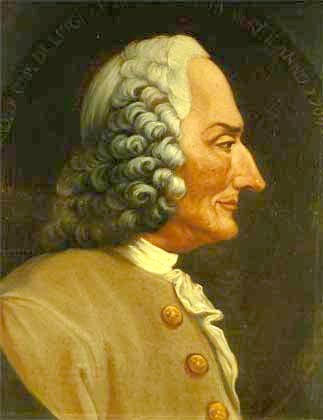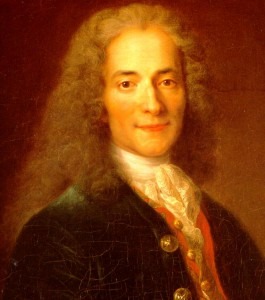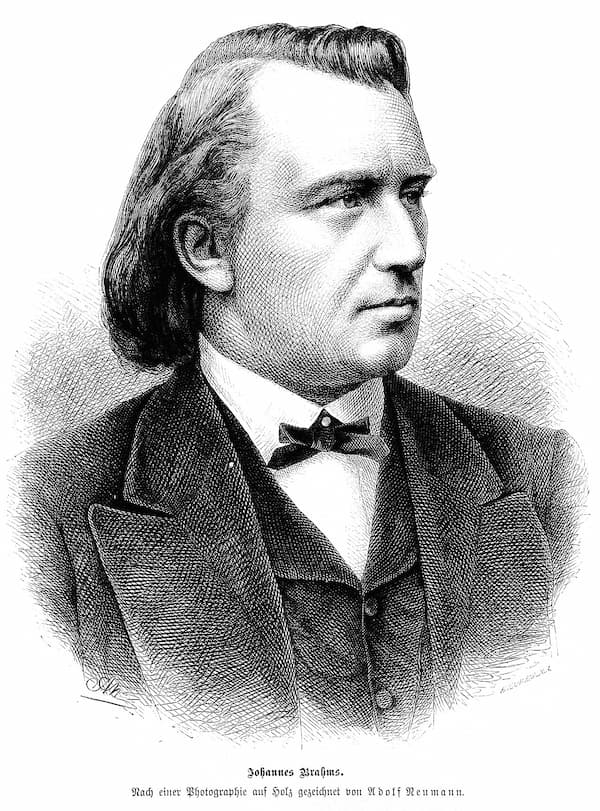
Jean-Philippe Rameau
Credit: http://www.8notes.com/
Jean-Philippe Rameau: Nouvelles Suites de Pieces de Clavecin, “La poule”
The clucking motif, which dominates the composition, appears in both minor and major harmonies. Although Rameau cleverly attempts to transcribe a sound of nature, one might easily forsake the barnyard imagery and hear the composition as pure music. Rameau essentially uses the keyboard as a sustaining instrument, “and the last forte makes clear the seriousness of the piece. This tragic impatience of the climax seems to close the drama in violence.” L’Enharmonique (The Enharmonic) and L’Egyptienne (The Egyptian) look forward to the harmonic and formal convention of the early classic period.
Jean-Philippe Rameau: Nouvelles Suites de Pieces de Clavecin, “L’enharmonique,”
“L’Egyptienne”

Voltaire
Credit: http://www.deism.com/
Jean-Philippe Rameau: Deus noster refugium (God is our hope)
Between 1718 and 1728, Rameau composed six chamber cantatas. Le berger fidèle (The Faithful Shepherd) was inspired by the work of Italian poet Giovanni Battista Guarini. The cantata is scored for tenor voice and a small instrumental ensemble consisting of two violins and basso continuo. The action takes place in the fictional pastoral land of Arcadia, the idyllic home of shepherds and nymphs. Arcadia is threatened by a curse of the goddess Dianna, which requires either the marriage of two descendants of divine lineage or the sacrifice of a chaste nymph. Various love triangles later, all ends well.
Jean-Philippe Rameau: Le berger fidèle
With Le berger fidèle Rameau prepared the way for his work on a large number of different dramatic genres. Please join me next time, when we sample Rameau’s musical powers on the dramatic stage.


